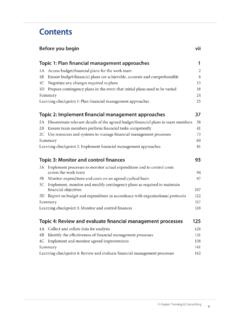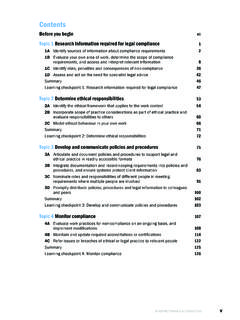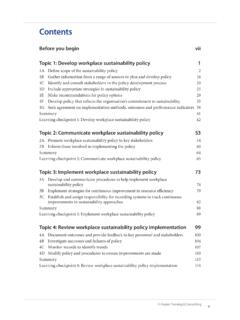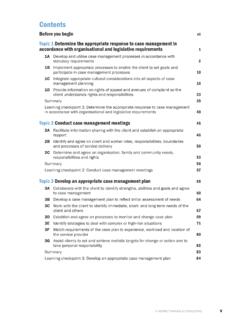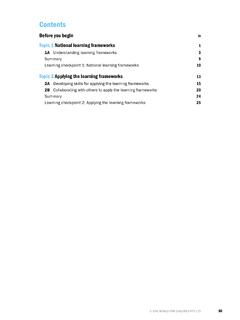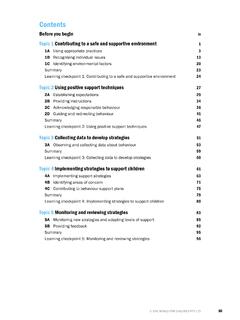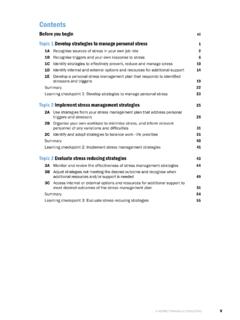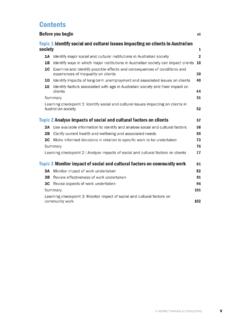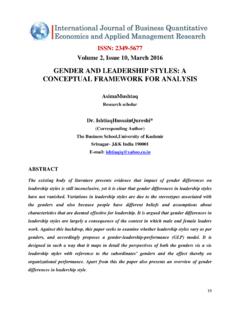Transcription of CHCDIV002 Promote Aboriginal and/or Torres Strait Islander ...
1 ASPIRE TRAINING & CONSULTING vContentsBefore you begin viiTopic 1 Identify cultural safety issues in the workplace 11A Identify the potential impact of cultural factors on services delivery 21B Identify critical issues that influence relationships and communication 211C Establish key aspects of cultural safety in consultation 271D Evaluate the extent to which cultural safety is integrated in own work and workplace 36 Summary49 Learning checkpoint 1: Identify cultural safety issues in the workplace 50 Topic 2 Model cultural safety in own work 572A Ensure work practices are grounded in awareness 582B Reflect awareness of own and other cultures in work practices 662C Use communication techniques and work practices that show respect 722D Engage with Aboriginal and/or Torres Strait Islander interpreters and colleagues77 Summary81 Learning checkpoint 2.
2 Model cultural safety in own work 82 Topic 3 Develop strategies for improved cultural safety 873A Support the development of effective partnerships 883B Identify and utilise resources to Promote partnerships 933C Devise and document ways to support the delivery of services and programs1013D Integrate strategies that encourage self-determination and community control110 Summary114 Learning checkpoint 3: Develop strategies for improved cultural safety 115 Topic 4 Evaluate cultural safety strategies 1174A Agree on outcomes against which cultural safety strategies can be measured1184B Involve Aboriginal and/or Torres Strait Islander people in evaluations 1204C Evaluate programs and services against desired outcomes 1224D Revise strategies based on evaluation 124 Summary126 Learning checkpoint 4.
3 Evaluate cultural safety strategies 1278 CHCDIV002 Promote Aboriginal and/or Torres Strait Islander CULTURAL SAFETY A holistic viewMany Aboriginal and/or Torres Strait Islander people are often hesitant to seek advice from health services or health professionals. Perhaps this is because Indigenous Australian people view their health holistically. A holistic view takes into account the physical, spiritual, social, emotional and cultural wellbeing of individuals and communities. Aboriginal and/or Torres Strait Islander relationships within the community, as well as their spiritual link to the land and their ancestors, often feature when interpreting health Indigenous Australian people believe that illness is caused by evil spirits, or else that it is payback for behaviours such as disobeying certain cultural practices.
4 Many also believe that the destruction of sacred sites where spirits live causes illness or natural disasters, such as floods and of Indigenous Australian culturesCultural diversity refers to the many differences in language, law, ceremony, lifestyle, customs and beliefs in a community. Indigenous Australian cultures have strong links to coun try the term refers to not only the land, but also t o the people, animals, birds and plants that inhabit it, and the creation spirit that formed the world. The Dreamtime stories, songlines and ongoing Dreaming, which apply to Indigenous Australian families, can be fostered through the education and teaching of their children from a very young age.
5 In every population, there is a wide range of backgrounds, personalities, values and beliefs represented. The same is true in Aboriginal and/or Torres Strait Islander populations. For example, in the greater Sydney area alone there are 34 Aboriginal groups. Within these groups, there are four languages and a variety of cultural customs. Whilst every community will have common ground and similarities within them, they will also have different issues and attitudes. No single Indigenous Australian person or group is the knowledge holder for the whole community.
6 Hence, it is important to always recognise and acknowledge diversity and individual needs and of Aboriginal and/or Torres Strait Islander peopleThe cultures of Aboriginal and/or Torres Strait Islander peopl e are complex and extremely diverse. Aboriginal people come from mainland Australia, Tasmania and other islands such as Stradbroke Island and Groote Eylandt. Torres Strait Islander people live be tween the t op of Queensland and Papua New Guinea. Locally, Aboriginal people use different words to describe themselves as Indigenous Australians.
7 The fol lowing information outlines these terms as they roughly refer to the area of Australia a group comes from. ASPIRE TRAINING & CONSULTING12 ASPIRE TRAINING & CONSULTINGCHCDIV002 Promote Aboriginal and/or Torres Strait Islander CULTURAL SAFETY reception and inquiry servicesThe reception or inquiry service should show empathy and positive communication when dealing with any information or service inquiry. An understanding of how family relationships and, skin systems work, and knowledge of practices surrounding death and dying, can help avoid misunderstandings.
8 For example, refrain from mentioning a dead relative s name as this is taboo in Indigenous Australian servicesAboriginal and/or Torres Strait Islander people may not like their blood or urine being taken. They may find it shameful or embarrassing. If this is required, an interpreter or an Aboriginal liaison officer should be involved in explaining the necessity of taking knowledgeUnderstanding Aboriginal and/or Torres Strait Islander cultures enables non-Indigenous workers to dismantle the traditional power relations between Indigenous people and non-Indigenous co-workers.
9 Here are some more examples of why some systems and procedures may be found confronting and/or servicesThe Aboriginal and/or Torres Strait Islander kinship systems emphasises that everyone is related to one another, so in most Indigenous affairs, including sickness, death and ceremonies, the whole community participates. The presence of extended family may assist an individual s recovery and wellness. If you work in a hospital setting, visiting rules may need to be flexible to accommodate the many relatives of the sick individual who may visit at different and community servicesLearning about Indigenous Australians can deconstruct the negative stereotypes and assumptions that many people have about Indigenous Australians.
10 An open mind can make a difference in your dealing with Indigenous outpatients receiving community services. For example, practise listening to Aboriginal and/or Torres Strait Islander people rather than telling them what to do; show empathy and use effective communication skills to avoid conflict and servicesAboriginal and/or Torres Strait Islander people may have personal barriers that make it difficult for them to participate in screening services such as breast, cervical, bowel or prostate scans and tests. Many Indigenous Australians, particularly women, do not like taking their clothes off in the presence of ASPIRE TRAINING & CONSULTINGCHCDIV002 Promote Aboriginal and/or Torres Strait Islander CULTURAL SAFETY Other aspects of cultural lifeCultural awareness training should be part of the induction or orientation program of new staff and as ongoing training in the community services workforce.
